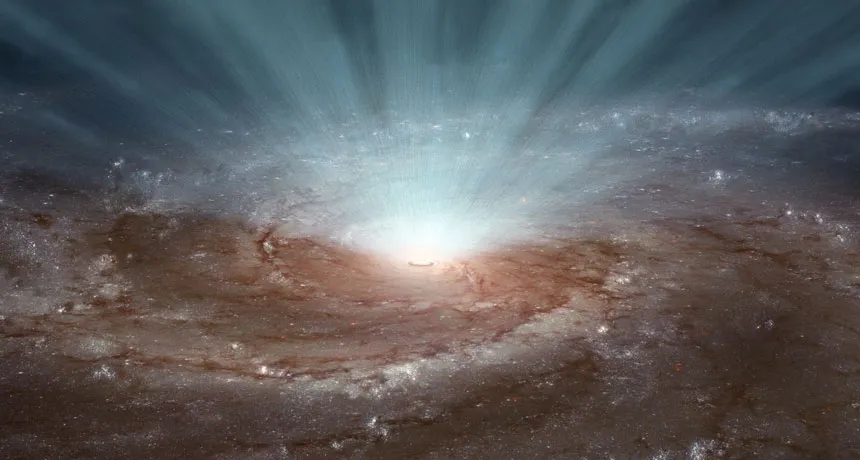
A MIGHTY WIND Supermassive black holes in the centers of galaxies can blow gas and plasma far away from their galaxies, as shown in this artist’s illustration based on the Pinwheel galaxy.
JPL-Caltech/NASA

A MIGHTY WIND Supermassive black holes in the centers of galaxies can blow gas and plasma far away from their galaxies, as shown in this artist’s illustration based on the Pinwheel galaxy.
JPL-Caltech/NASA